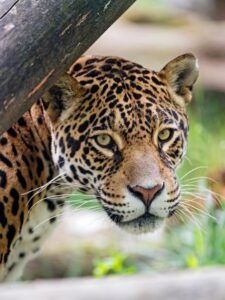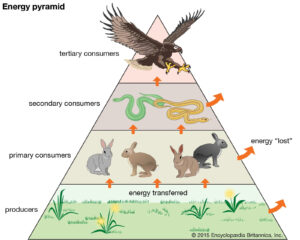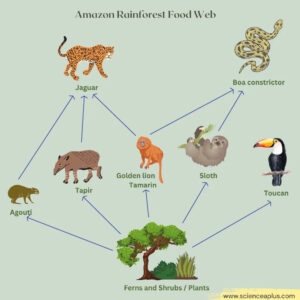

Figures 1 & 2: A Depiction of Several Jaguars (1; 2)
The jaguar (Panthera onca) plays a critical role in Costa Rican beliefs and ecology. It is ingrained deeply in Costa Rican heritage, serving as a powerful symbol of strength in many cultures within Costa Rica and representing the form of the Mayan ruler of the underworld. The animal is also a prominent attraction for ecotourism, which provides substantial income for Costa Rica, and local communities prioritize its conservation as it is deemed as “Near Threatened” according to the International Union for Conservation of Nature (IUCN) Red List of Threatened Species (11). However, evolving reforestation efforts in Costa Rica have also served to expand the jaguar’s previously shrinking habitat. The jaguar needs at least 100 square miles of forest to sustain itself, so jaguar conservation and reforestation efforts are working in parallel within Costa Rica. Fortunately, studies from the coast of Área de Conservación Guanacaste (ACG) in Northeast Costa Rica showed that the jaguar population has grown from 0 jaguars detected between 2005 to 2009 to 20 jaguars in 2021 (13).
Additionally, the jaguar holds a critical role in Costa Rica’s ecology. It is what is known as a keystone species, a species that has a disproportionate impact on its environment compared to its abundance. To take a step back, ecosystems are the combination of living organisms with their physical surroundings. They can be thought of as food pyramids or, more realistically, food webs. Figure 3 depicts a generalized example of a food pyramid with each level consuming the one below it. Figure 4 depicts a more realistic Amazon rainforest food web that includes multiple food sources for different types of animals. The Jaguar’s diet mainly consists of “deer, peccaries, caimans, tapirs, sloths, monkeys, reptiles, fish, and domestic animals” (15).


Figures 3 & 4: Generalized Depiction of Food/Tropic Pyramid (Left) and Amazon Rainforest Food Web (Right) (3; 4)
The jaguar plays a crucial role in the ecological balance of an ecosystem, as do many apex predators because it keeps the populations of other species in check. One can imagine that if the jaguar populations dwindled, the populations of its prey (tapirs, for instance) would increase because more tapirs would survive. The population of the organisms that tapirs consume would then accordingly decrease because more of them would be consumed. This pattern would continue across the ecosystem, throwing the system out of balance. Therefore, the jaguar keeps its ecosystem from having various severe population fluctuations. Moreover, the jaguar helps to maintain genetic diversity in its prey populations. (Genetic diversity is the sum of the variety of traits and characteristics encoded by the genes of a species. Having increased genetic diversity is beneficial because if a population of animals faces environmental challenges [diseases, habitat changes, etc.], there is a higher chance that some organisms will have characteristics that help them survive and allow the population to adapt to over time.) Because the jaguar chooses the easiest prey to hunt, it will consume the weakest and least genetically fit individuals. (Genetic fitness is a measure of reproductive success. In other words, fitness measures if an organism is adapted well enough to its environment to survive and create offspring.) Jaguars hunting the easiest prey to catch means that only the strongest and best-fit prey are left to pass on their genes to the next generation, increasing the overall genetic fitness of the prey population generation after generation.

Figure 5: A Tapir Mother and Baby at the Houston Zoo (5)
The jaguar is also called an umbrella species. Umbrella species are chosen by conservation biologists to protect because protecting the habitats of those species means simultaneously protecting other keystone species. An example of that other keystone species in the case of the jaguar is the Baird’s tapir (Tapirus bairdii). Tapirs help with seed dispersal because they eat fruit and then the seeds of the fruit are pooped out in a different location. In doing so, they help with rainforest recovery. One study on a different species of tapirs in the Brazilian Amazon found that these “mammals spend significantly more time in burned forests than those that are relatively untouched” (16). This behavior even further increases the species’ impact on forest revival as they accelerate the revival process of burned forests when they disperse seeds.
In conclusion, it is important to note that jaguars have significant cultural and economic significance for Costa Rican communities, and they play a crucial role in maintaining the ecological balance of Costa Rica’s ecosystems. Protecting the jaguar and its habitat is not only beneficial for the country’s biodiversity, but it also helps preserve an important cultural symbol and one of nature’s marvels. Although our class did not see jaguars during our study abroad trip in Costa Rica does not mean we did not experience their many impacts on the nature and society that surrounded us.
Figure References:
-
- https://storymaps.arcgis.com/stories/10b53207d0f54c0183b78668842039a4
- https://howlermag.com/2018/01/creature-feature-cool-cat-crucial-place-ecosystem/
- https://www.britannica.com/science/trophic-pyramid
- https://scienceaplus.com/blog/rainforest-food-chain-and-rainforest-food-web/
- https://www.houstonzoo.org/blog/tiny-tapir-born-at-the-zoo/
Sources:
-
- https://storymaps.arcgis.com/stories/10b53207d0f54c0183b78668842039a4
- https://thekidshouldseethis.com/post/tapir-nectar-bat-jicaro-danto-tree-video
- https://www.nature.com/scitable/knowledge/library/keystone-species-15786127/#:~:text=The%20concept%20of%20keystone%20species,within%20their%20ecosystem%20or%20community.
- https://www.nationalgeographic.com/animals/mammals/facts/baird-s-tapir
- https://www.oryxthejournal.org/blog/national-parks-revisited-their-importance-for-the-conservation-of-lowland-tapir-in-a-mosaic-of-different-ownership-lands/#:~:text=The%20lowland%20tapir%20Tapirus%20terrestris,structure%20and%20diversity%20of%20forests.
- https://www.iucnredlist.org/species/15953/123791436
- https://www.researchgate.net/publication/344571348_First_documented_predation_of_a_Baird’s_tapir_by_a_jaguar_in_the_Calakmul_region_Mexico
- https://www.gdfcf.org/content/new-report-acg-jaguar-populations
- https://www.goeco.org/article/costa-ricas-jaguars/
- http://www.costaricajourneys.com/the-jaguar/#:~:text=Diet%3A%20The%20Jaguar%20is%20a,secluded%20spot%20to%20eat%20it.
- https://news.mongabay.com/2019/03/tapirs-could-be-key-in-helping-amazon-forest-come-back/#:~:text=Tapirs%20may%20help%20rainforests%20recover,those%20that%20are%20relatively%20untouched.
- https://www.gdfcf.org/content/new-report-acg-jaguar-populations#:~:text=Overall%2C%20the%20study%20shows%20that,to%2020%20jaguars%20during%202021.
- https://news.mongabay.com/2019/03/tapirs-could-be-key-in-helping-amazon-forest-come-back/
- https://doi.org/10.1111/btp.12627
